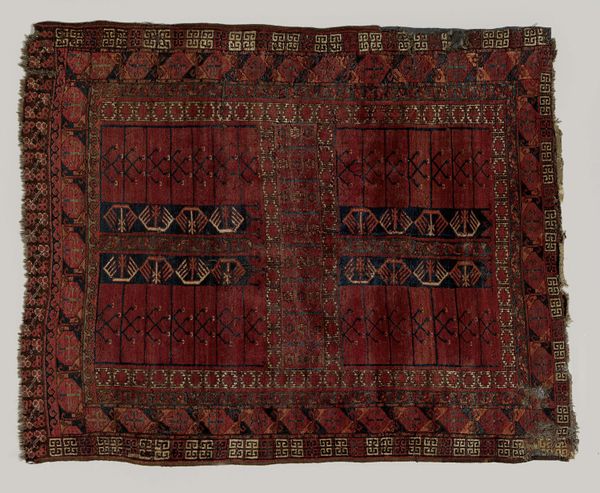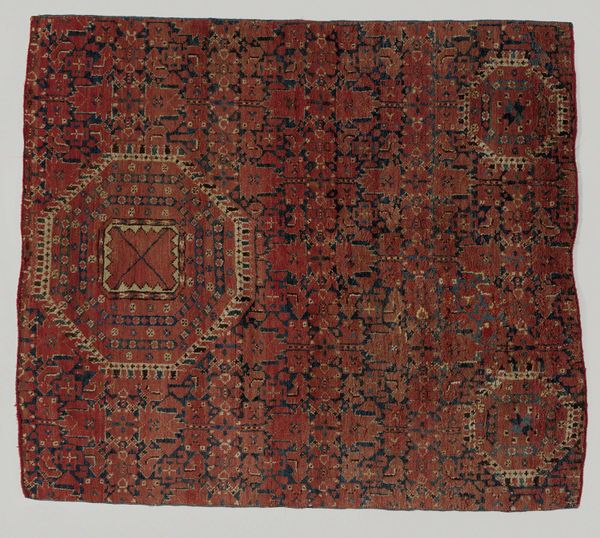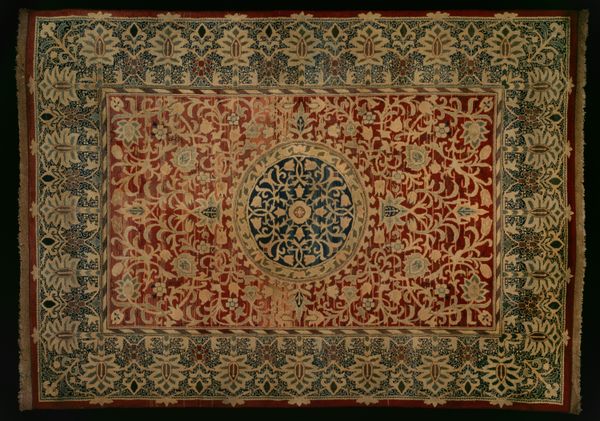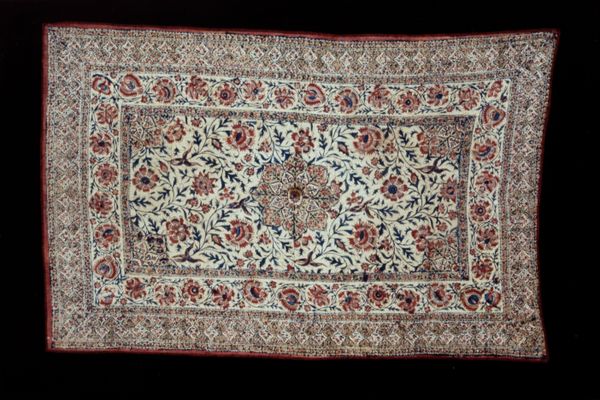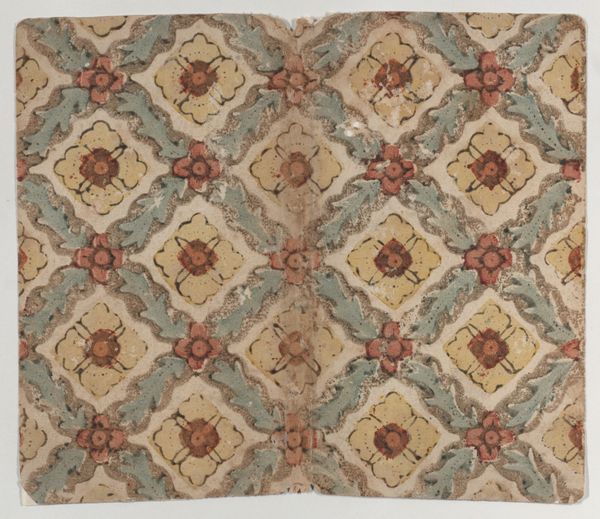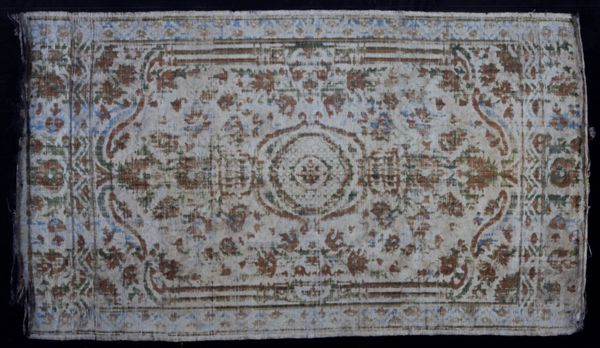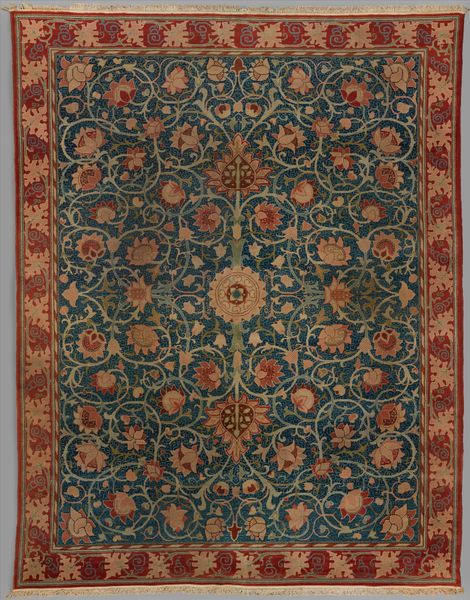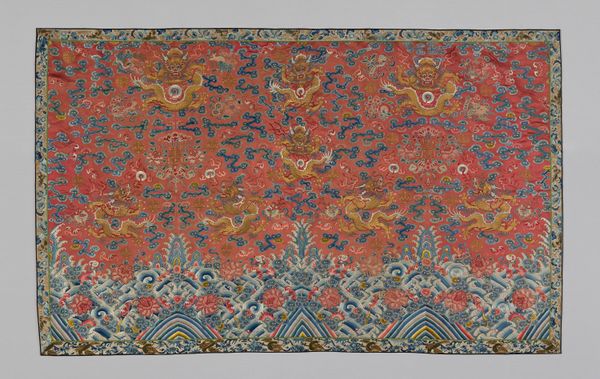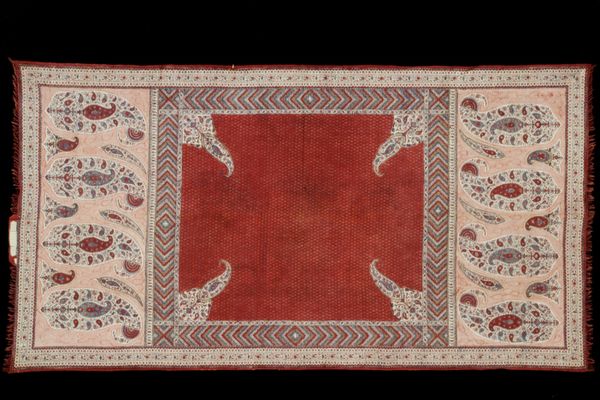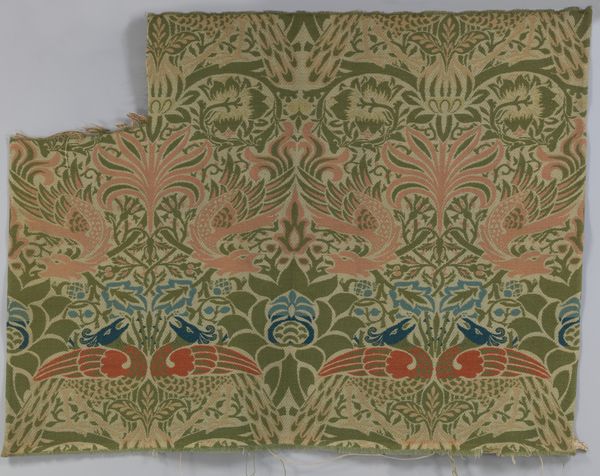
weaving, textile
#
natural stone pattern
#
weaving
#
textile
#
fashion and textile design
#
text
#
pattern design
#
geometric
#
fabric design
#
repetition of pattern
#
regular pattern
#
pattern repetition
#
islamic-art
#
textile design
#
imprinted textile
#
layered pattern
Dimensions: 105 × 67 cm (41 3/8 × 26 3/8 in.)
Copyright: Public Domain
Editor: Here we have a 16th-century textile panel from an anonymous artist at the Art Institute of Chicago. The crimson and gold tones immediately struck me, and the geometric pattern seems so meticulously crafted. What symbols and stories do you think this work holds? Curator: Ah, yes! The rhythmic repetition immediately evokes a sense of the infinite, common in Islamic art where geometric patterns stand in for representations of the divine. Notice the circular motifs and interwoven knot designs. Such recurring elements create visual harmony, symbolizing unity and the cyclical nature of existence. Consider too the historical moment – what stories might the owner have known through this very item? Editor: I hadn't thought about that aspect – that the symbols also spoke to that person. The "knots" you mention, do they represent a particular idea or spiritual quality? Curator: In many cultures, knots symbolize interconnectedness and protection. Here, these eternal knots suggest a spiritual link between humanity and the divine. Reflect on the color, too. Crimson often signifies power, sacrifice, and spiritual intensity, a poignant message. Editor: It's incredible how one textile can speak volumes about belief systems and cultural values across time. I feel I can glimpse part of a world from long ago. Curator: Indeed. This textile carries not only artistic value, but also layers of meaning embedded within its visual language.
Comments
No comments
Be the first to comment and join the conversation on the ultimate creative platform.
